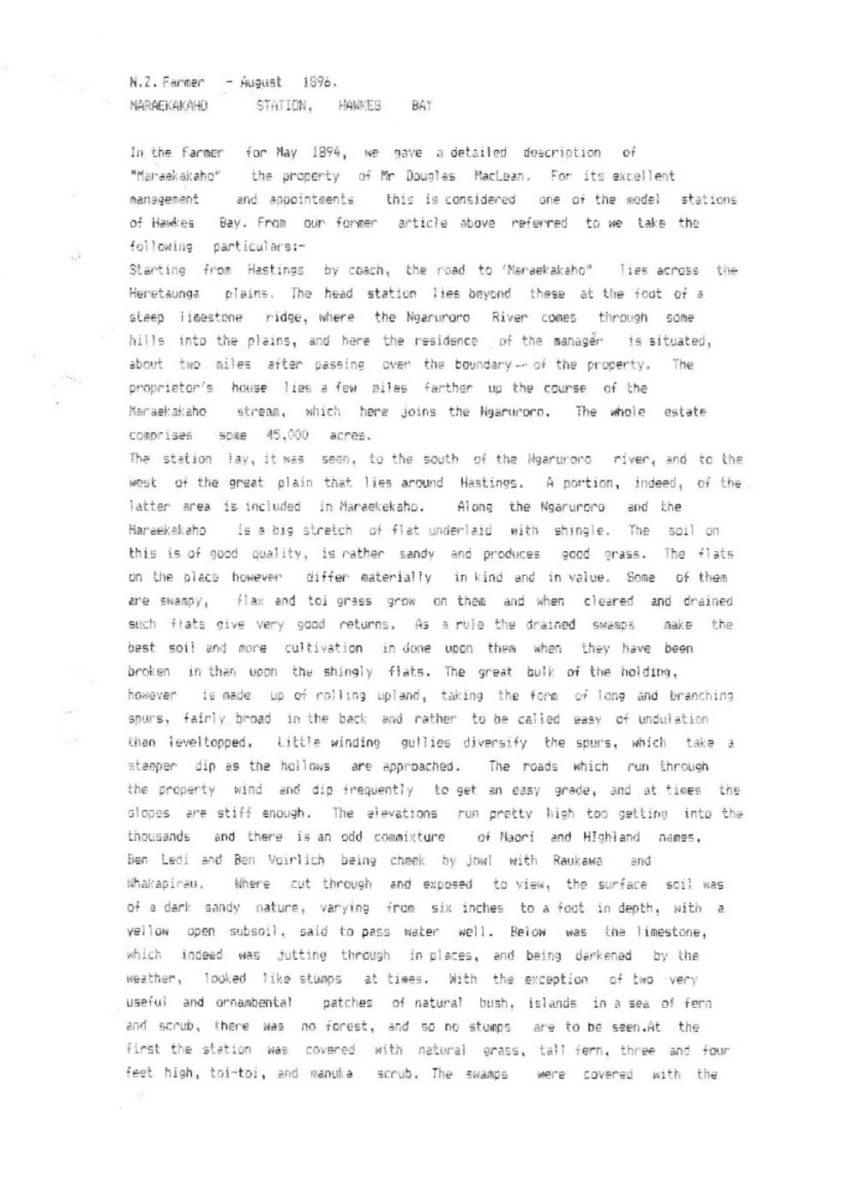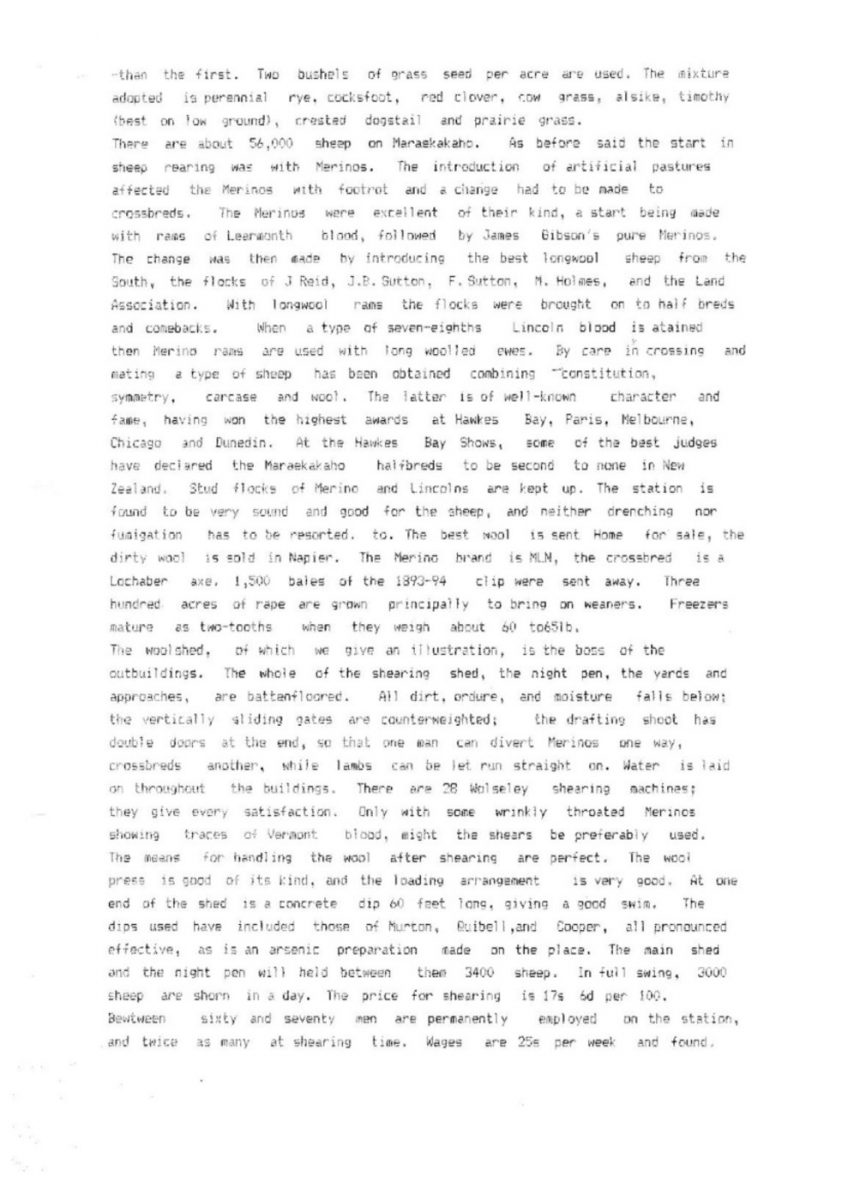than the first. Two bushels of grass seed per acre are used. The mixture adopted is perennial rye, cocksfoot, red clover, cow grass, alsike, timothy (best on low ground), crested dogstail and prairie grass.
There are about 56,000 sheep on Maraekakaho. As before said the start in sheep rearing was with Merinos. The introduction of artificial pastures affected the Merinos with footrot and a change had to be made to crossbreds. The Merinos were excellent of their kind, a start being made with rams of Learmonth blood, followed by James Gibson’s pure Merinos. The change was then made by introducing the best longwool sheep from the South, the flocks of J Reid, JB Sutton, F Sutton, M Holmes, and the Land Association. With longwool rams the flocks were brought on to half breds and comebacks. When a type of seven-eighths Lincoln blood is attained then Merino rams are used with long woolled ewes. By care in crossing and mating a type of sheep has been obtained combining constitution, symmetry, carcase and wool. The latter is of well-known character and fame, having won the highest awards at Hawke’s Bay, Paris, Melbourne, Chicago and Dunedin. At the Hawke’s Bay Shows, some of the best judges have declared the Maraekakaho half breds to be second to none in New Zealand. Stud flocks of Merino and Lincolns are kept up. The station is found to be very sound and good for the sheep, and neither drenching nor fumigation has to be resorted to. The best wool is sent Home for sale, the dirty wool is sold in Napier. The Merino brand is MLN, the crossbred is a Lochaber axe. 1,500 bales of the 1893-94 clip were sent away. Three hundred acres of rape are grown principally to bring on weaners. Freezers mature as two-tooths when they weigh about 60 to 65lb.
The woolshed, of which we gave an illustration, is the boss of the outbuildings. The whole of the shearing shed, the night pen, the yards and approaches, are batten floored. All dirt, ordure, and moisture falls below; the vertically sliding gates are counterweighted; the drafting shoot has double doors at the end, so that one man can divert Merinos one way, crossbreds another, while lambs can be let run straight on. Water is laid on throughout the buildings. There are 28 Wolseley shearing machines; they give every satisfaction. Only with some wrinkly throated Merinos showing traces of Vermont blood, might the shears be preferably used. The means for handling the wool after shearing are perfect. The wool press is good of its kind, and the loading arrangement is very good. At one end of the shed is a concrete dip 60 feet long, giving a good swim. The dips used have included those of Murton, Quibell, and Cooper, all pronounced effective, as is an arsenic preparation made on the place. The main shed and the night pen will hold between them 3400 sheep. In full swing, 3000 sheep are shorn in a day. The price for shearing is 17s 6d per 100.
Between sixty and seventy men are permanently employed on the station, and twice as many at shearing time. Wages are 25s per week and found.
[END OF ARTICLE]














Do you know something about this record?
Please note we cannot verify the accuracy of any information posted by the community.